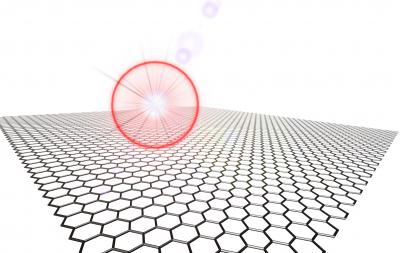A team of scientists at the RWTH Aachen University in Germany, the National University of Córdoba and CONICET in Argentina, and the Institut Catala de Nanotecnologia demonstrated that when graphene is illuminated with a mid-infrared laser its conduction could be turned off, which paves the way for innovative optoelectronic equipment.
 Graphene is illuminated by a laser field
Graphene is illuminated by a laser field
Despite an array of promising properties such as superior electrical and heat conductivity, total transparency yet high density impenetrable by even atoms of helium and many more, graphene does not exhibit a critical characteristic observed in semiconductors, called the band gap, which helps materials to control electron flow.
In an article published in Applied Physics Letters, the researchers record the first atomistic simulations of electrical conduction in a graphene sample of micrometer size that was subjected to laser illumination. The simulations demonstrated that a mid-infrared laser can establish a band gap in a gapless material like graphene.
A researcher supervising this collaboration, Luis Foa Torres, stated that if graphene conduction is switched off by turning the light on or vice versa, then it would enable the optical signals to be transduced into electrical signals. He added that the challenge posed by graphene when interacting with radiation will throw some light on study of more exotic states of matter including topological insulators.